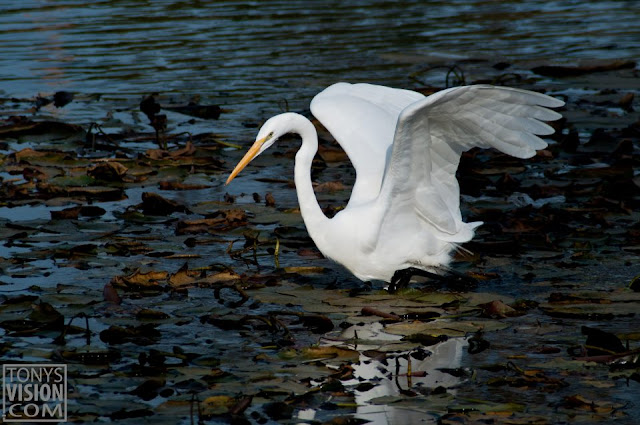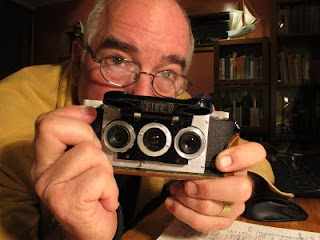But actually the vehicle is a respected bit of photographic equipment. Ansel bolted a sturdy platform on top of his to achieve a viewpoint with added height. I've often climbed on top of our little Minnie Winnie motor home for the same reason. Perhaps not the same level of results.
In the realm of wildlife photography, a few of my most satisfying results have resulted when not even leaving the driver's seat. The thing is, a vehicle makes a wonderful blind. Critters are used to them. Vehicles can generally be depended upon to stay on the road, and not throw rocks, chase, or otherwise interfere threateningly with their making a living the way humans might.
A few years ago I decided to head out in my pickup on a misty morning. I'd been seeing some deer among the oaks lining the golf course in our community, and I had the idea of an image of trees receding into the mist with some deer sprinkled attractively in the composition. Instead I came upon this pair resting in someone's front yard. I had a 70-300 mm lens on my Nikon D-80. Staying in the truck I was able to back up a bit, then pull forward a bit, to get the composition just right without disturbing the deer. I like the quiet, misty feel of this image, the warmth some of the colors add to the misty day, the way the shapes of the doe's and buck's heads juxtapose just right, and the way he receeds into the mist. I'm sure that if I had left the truck to compose, all I would have seen in the viewfinder would have been oaks and mist.
Yesterday on the way back from errands, my wife and I enjoyed seeing a beautiful egret that has made itself at home fishing the two ponds adjacent to the entrance to our community. At home I put my 300 mm lens on my D300 and headed back to the pond. Thanks to paved parking areas and roads adjacent to the ponds I was able to move slowly around, working the best light, as the egret did his work. After reviewing the first images I realized that the dark background provided by the water was resulting in a bit of overexposure and loss of detail in those bright white feathers. So I backed the exposure compensation down to minus 1. I used the seat back to help steady the camera. The window sill can work also, but as accustomed as this bird is to passing vehicles, I was cautious of being too obviously a human by appearing in the window. Some OK photos resulted - how could they not with such a beautiful creature to work with. But then it raised its wings for balance as it stepped into some deeper water, and my finger thankfully reacted almost without thought.
Prints of my images may be obtained via TonysVision.com
























